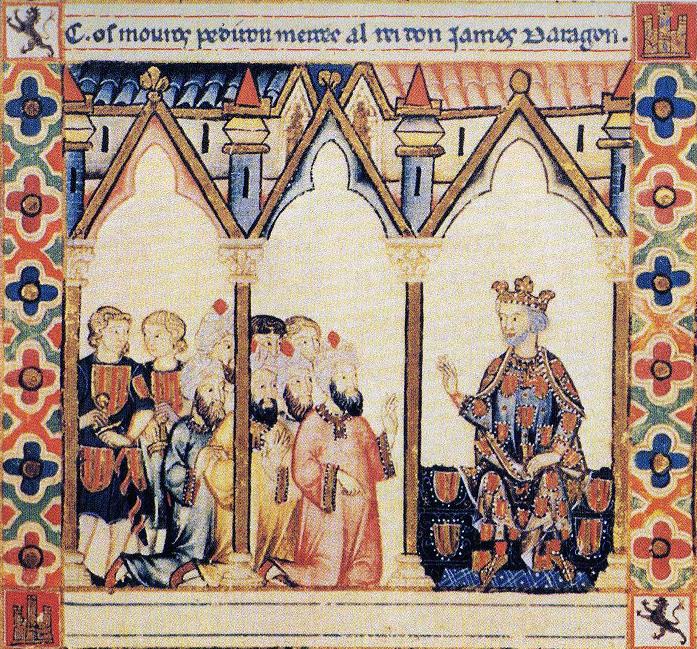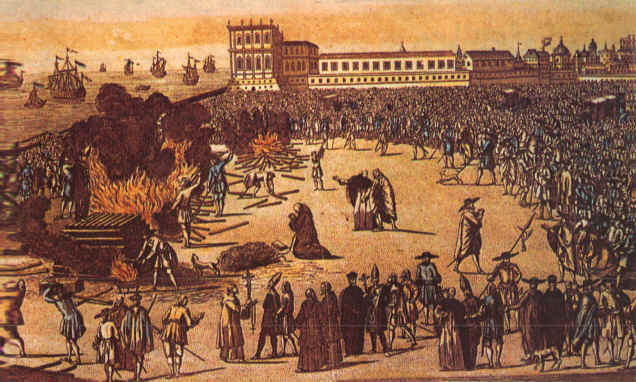|
Abraham Aboab
Rav Abraham Aboab (Hebrew: אברהם אבוהב; 1263) was a 13th century Spanish Jewish aristocrat and founder of the Aboab family. Possibly born in Pelof, Aragon, not much is known of his early life. It seems that Aboab developed a very close relationship with James I of Aragon, who in 1263 gifted Aboab a tower called Altea, with the surrounding dairy farms and all rights and privileges of ownership along with a heraldic achievement "Or, Five mullets placed in saltire gules". This was quite unprecedented for a 13th century Jew, and demonstrates the tolerant attitude of James I of Aragon. Aboab had one son Isaac Aboab I, who was a notable Talmudic The Talmud (; he, , Talmūḏ) is the central text of Rabbinic Judaism and the primary source of Jewish religious law ('' halakha'') and Jewish theology. Until the advent of modernity, in nearly all Jewish communities, the Talmud was the cen ... scholar. {{Cite web, title=ABOAB - JewishEncyclopedia.com, url=http://www.jewish ... [...More Info...] [...Related Items...] OR: [Wikipedia] [Google] [Baidu] |
Hebrew Language
Hebrew (; ; ) is a Northwest Semitic language of the Afroasiatic language family. Historically, it is one of the spoken languages of the Israelites and their longest-surviving descendants, the Jews and Samaritans. It was largely preserved throughout history as the main liturgical language of Judaism (since the Second Temple period) and Samaritanism. Hebrew is the only Canaanite language still spoken today, and serves as the only truly successful example of a dead language that has been revived. It is also one of only two Northwest Semitic languages still in use, with the other being Aramaic. The earliest examples of written Paleo-Hebrew date back to the 10th century BCE. Nearly all of the Hebrew Bible is written in Biblical Hebrew, with much of its present form in the dialect that scholars believe flourished around the 6th century BCE, during the time of the Babylonian captivity. For this reason, Hebrew has been referred to by Jews as ''Lashon Hakodesh'' (, ) since a ... [...More Info...] [...Related Items...] OR: [Wikipedia] [Google] [Baidu] |
History Of The Jews In Spain
While the history of the Jews in the current-day Spanish territory stretches back to Biblical times according to legendary Jewish tradition, the settlement of organised Jewish communities in the Iberian Peninsula possibly traces back to the times after the destruction of the Second Temple in 70 CE. The earliest archaeological evidence of Hebrew presence in Iberia consists of a 2nd-century gravestone found in Mérida. From the late-6th century onward, following the Visigothic monarchs' conversion from Arianism to the Nicene creed, conditions for Jews in Iberia considerably worsened. Following the Islamic conquest of the Iberian Peninsula in the early 8th century, Jews lived under the ''Dhimmi'' system and progressively arabised. Jews of Al-Andalus stood out particularly during the 10th and 11th centuries, in the caliphal and first taifa periods. Scientific and philological study of the Hebrew Bible began, and secular poetry was written in Hebrew for the first time. Following th ... [...More Info...] [...Related Items...] OR: [Wikipedia] [Google] [Baidu] |
Aboab Family
The Aboab family (Hebrew: אבוהב, ''Abuhav''; Arabic: ابوآب, ''Abuwab''; Turkish: Abuaf; Slavic: Abuyav) is an old and distinguished Western Sephardic family, originally from Aragon, Spain. The family has produced several notable rabbis, scholars, physicians, and merchants - especially achieving prominence in Amsterdam, Venice and Hamburg. The progenitor of the family is Rav Abraham Aboab, who, in 1263 was given a tower in Altea, Aragon with the surrounding dairy farms along with a heraldic achievement by James I of Aragon. Some have suggested that Aboab is a spelling of the Arabic "Abdelwahab", which means "the benefactor’s servant", while others have stated that it derives from the town of Umm al-Abohav in Tunisia. History The family progenitor Abraham Aboab had one son, Isaac Aboab I who was a Talmudic scholar in Aragon. He later moved to Toledo, Castile, where he headed his own yeshiva, teaching Jewish ethics. He is best known for his work Menorat ha-Maor, whic ... [...More Info...] [...Related Items...] OR: [Wikipedia] [Google] [Baidu] |
Aragon
Aragon ( , ; Spanish and an, Aragón ; ca, Aragó ) is an autonomous community in Spain, coextensive with the medieval Kingdom of Aragon. In northeastern Spain, the Aragonese autonomous community comprises three provinces (from north to south): Huesca, Zaragoza, and Teruel. Its capital is Zaragoza. The current Statute of Autonomy declares Aragon a '' historic nationality'' of Spain. Covering an area of , the region's terrain ranges diversely from permanent glaciers to verdant valleys, rich pasture lands and orchards, through to the arid steppe plains of the central lowlands. Aragon is home to many rivers—most notably, the river Ebro, Spain's largest river in volume, which runs west–east across the entire region through the province of Zaragoza. It is also home to the highest mountains of the Pyrenees. , the population of Aragon was , with slightly over half of it living in its capital city, Zaragoza. In 2020, the economy of Aragon generated a GDP of million, w ... [...More Info...] [...Related Items...] OR: [Wikipedia] [Google] [Baidu] |
James I Of Aragon
James I the Conqueror ( es, Jaime el Conquistador, ca, Jaume el Conqueridor; 2 February 1208 – 27 July 1276) was King of Aragon and Lord of Montpellier from 1213 to 1276; King of Majorca from 1231 to 1276; and Valencia from 1238 to 1276 and Count of Barcelona. His long reign—the longest of any Iberian monarch—saw the expansion of the Crown of Aragon in three directions: Languedoc to the north, the Balearic Islands to the southeast, and Valencia to the south. By a treaty with Louis IX of France, he achieved the renunciation of any possible claim of French suzerainty over the County of Barcelona and the other Catalan counties, while he renounced northward expansion and taking back the once Catalan territories in Occitania and vassal counties loyal to the County of Barcelona, lands that were lost by his father Peter II of Aragon in the Battle of Muret during the Albigensian Crusade and annexed by the Kingdom of France, and then decided to turn south. His gre ... [...More Info...] [...Related Items...] OR: [Wikipedia] [Google] [Baidu] |
Isaac Aboab I
Rabbi Isaac ben Abraham Aboab ( Hebrew: רבי יצחק בן אברהם אבוהב; 1300) also known by his magnum opus, Menorat ha-Maor, was an early 14th century Spanish Talmudic scholar and Kabbalist. He is known for his intellectual approach to rabbinic literature, which he juxtaposed with contemporary Spanish Kabbalah. Biography Probably born in Aragon, his father Rav Abraham Aboab, had a close relationship with the Crown of Aragon, being gifted land and a heraldic achievement by James I of Aragon in 1263. In his early years Rabbi Isaac worked as a merchant, later moving to Toledo, Castile around 1300. In Toledo, he headed his own yeshiva, and amongst his pupils was Jacob Berab. He mostly taught Jewish ethics, later serving in the rabbinate in Toledo. Towards the end of his life, he devoted much of his time to literary work and to preaching, as he found that great Talmudic scholars and important seats of learning of his time to be antiquated. In his time, the J ... [...More Info...] [...Related Items...] OR: [Wikipedia] [Google] [Baidu] |
Talmud
The Talmud (; he, , Talmūḏ) is the central text of Rabbinic Judaism and the primary source of Jewish religious law ('' halakha'') and Jewish theology. Until the advent of modernity, in nearly all Jewish communities, the Talmud was the centerpiece of Jewish cultural life and was foundational to "all Jewish thought and aspirations", serving also as "the guide for the daily life" of Jews. The term ''Talmud'' normally refers to the collection of writings named specifically the Babylonian Talmud (), although there is also an earlier collection known as the Jerusalem Talmud (). It may also traditionally be called (), a Hebrew abbreviation of , or the "six orders" of the Mishnah. The Talmud has two components: the Mishnah (, 200 CE), a written compendium of the Oral Torah; and the Gemara (, 500 CE), an elucidation of the Mishnah and related Tannaitic writings that often ventures onto other subjects and expounds broadly on the Hebrew Bible. The term "Talmud" may refer to ... [...More Info...] [...Related Items...] OR: [Wikipedia] [Google] [Baidu] |
Spanish Jews
Spanish and Portuguese Jews, also called Western Sephardim, Iberian Jews, or Peninsular Jews, are a distinctive sub-group of Sephardic Jews who are largely descended from Jews who lived as New Christians in the Iberian Peninsula during the immediate generations following the forced expulsion of unconverted Jews from Spain in 1492 and from Portugal in 1497. Although the 1492 and 1497 expulsions of unconverted Jews from Spain and Portugal were separate events from the Spanish and Portuguese Inquisitions (which were established over a decade earlier in 1478), they were ultimately linked, as the Inquisition eventually also led to the fleeing out of Iberia of many descendants of Jewish converts to Catholicism in subsequent generations. Despite the fact that the original Edicts of Expulsion did not apply to Jewish-origin New Christian '' conversos'' —as these were now legally Christians— the discriminatory practices that the Inquisition nevertheless placed upon them, which ... [...More Info...] [...Related Items...] OR: [Wikipedia] [Google] [Baidu] |





